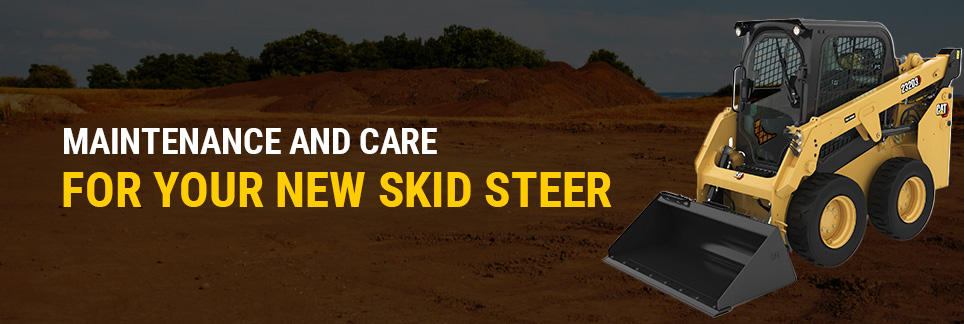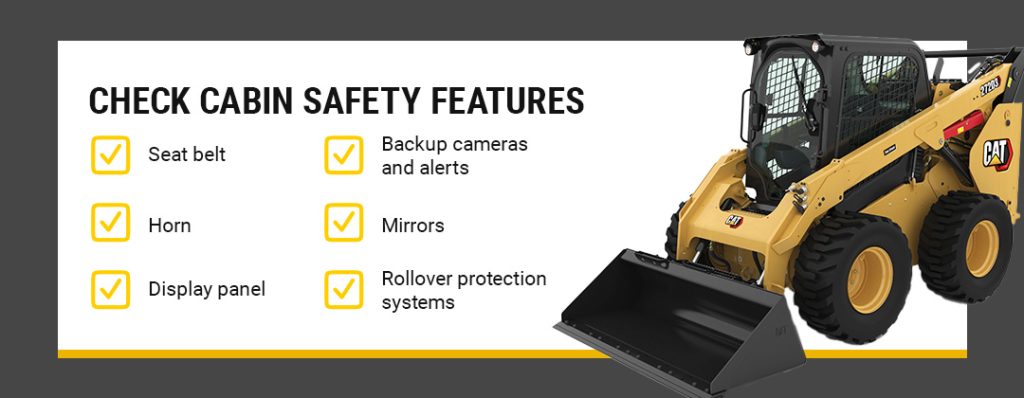
Even the most durable and high-performing skid steer loaders require regular maintenance. Once you’re equipped with the knowledge of caring for a skid steer, you’re ready to invest in a top-notch model.
Gregory Poole Equipment Company has over 70 years of experience and can help you find a suitable skid steer. We also offer service support that goes the extra mile to keep your equipment running smoothly.
Taking care of a skid steer lengthens its life span so that you can get the most out of this versatile equipment for longer. Preventive maintenance also allows you to:
You can complete many of the items on our checklist every time you use your skid steer. However, your user manual should be your go-to resource when it comes to maintenance frequency. Certain tasks only need to be completed every 250, 500 or 1,000 hours.
Your new skid steer maintenance plan should consist of the following steps.
Before you hop in the cabin, check your skid steer for visible damage. Inspect the tires, bolts, hoses, fuel tanks, boom and body for cracks or other signs of damage. Pay special attention to weld sites.
If pesky leaves, branches, brush, concrete or other debris remain stuck after a project, carefully remove them from the skid steer attachments. You should also double-check that your skid steer attachments are secure before starting a new project.
Some parts benefit from a good scrubbing:
You likely don’t have to clean your machine daily. However, giving it a quick rinse after use can help keep dirt and debris from building up and becoming difficult to remove later.

Test the following cabin safety features before every project:
If any of these features are not working properly, you can troubleshoot or talk to a professional.
The manufacturer’s manual will tell you the appropriate hydraulic oil, engine oil and coolant levels. Maintaining the proper levels prevents heat-related damage and can indicate potential issues. For example, excessive fluid loss may result from a leaky hose.
It’s also necessary to replace oils periodically and ensure they maintain the appropriate temperature. You can check oils seasonally — coolant helps prevent your equipment from overheating during the summertime, while the wintertime cold can cause oil to gel and damage equipment — but your owner’s manual is your most valuable resource for specific instructions.
Ideally, you’ll grease your machine after every 10 hours of use. Focus on the pivot pins, lifting arms and cylinders.
If your skid steer has air-filled tires, check them for damage. Confirm that they are inflated to the number described in your owner’s manual to enjoy better handling. Air pressure isn’t a concern with foam-filled tires, but you can still assess them for holes or damage that allow foam to leak out.
Compact track loaders (CTLs) are similar to skid steers, but they move on two parallel tracks rather than four tires. These machines require the appropriate track tension. Too little tension can result in loose tracks, while too much can lead to excessive wear. You can check out more CTL maintenance requirements in this blog post.
Air filters accumulate dust and dirt, and once they become too coated, they won’t filter air as efficiently. You can check your air filter according to your owner’s manual or inspect it after a day of heavy work in a dusty environment.
You’ll likely check your skid steer battery more often during winter. Drastic temperature changes can put your battery at greater risk of losing voltage. When it gets low, you can decide whether to recharge or replace it.
The following tips can also help you get the most out of your new investment:
Gregory Poole has helped clients in the construction, landscaping and agriculture industries find reliable equipment since 1951. We’re eastern North Carolina’s trusted Cat® dealer. In addition to providing industry-leading equipment, we offer competitive financing solutions and parts to help you get the job done. We’ll also support you after the sale with Cat Customer Value Agreements that include an Equipment Protection Plan.
If you’re looking to expand your fleet with one of these versatile powerhouses, check out our skid steers online or connect with a sales representative near you.
